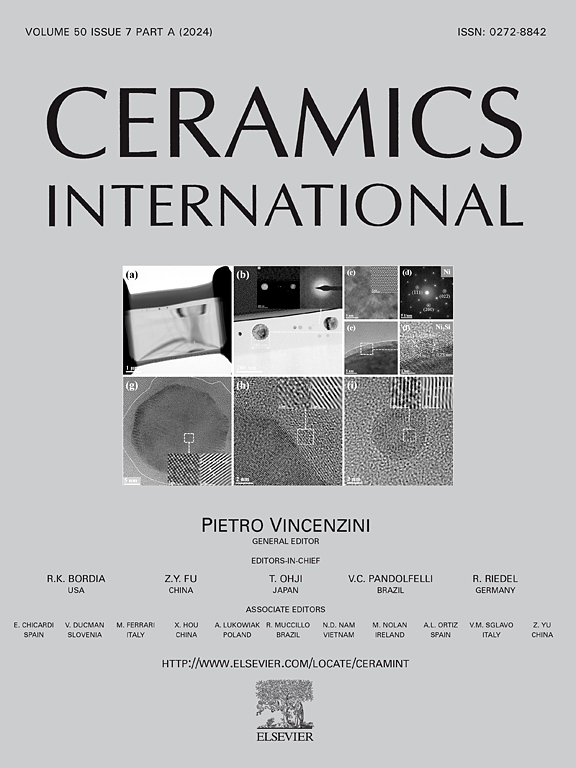Microstructure evolution of MAB-phase WAlB during helium irradiation and post-irradiation annealing
IF 5.1
2区 材料科学
Q1 MATERIALS SCIENCE, CERAMICS
引用次数: 0
Abstract
Ternary nano-laminated MAB phase WAlB has demonstrated exceptional neutron and gamma-ray shielding capacities, a property that can be attributed to its high atomic contents of tungsten (W) and boron (B). However, the substantial helium (He) production resulting from the reaction between neutrons and B elements makes WAlB susceptible to the potential damage of He effects that have been widely recognized in nuclear structural materials. Here, we report the first investigation on the microstructural evolution of WAlB induced by He ions irradiation and post-irradiation annealing. The irradiation-induced amorphization and annealing-activated epitaxial recrystallization of WAlB were revealed by the transmission electron microscope (TEM) and Raman spectroscopy. He behavior in the irradiated WAlB was quantitatively analyzed using elastic recoil detection analysis (ERDA). The annealing-induced alterations in He concentration depth profiles suggested the remarkable temperature-dependent characteristics of He migration behavior in crystalline and amorphous structures within WAlB.
求助全文
约1分钟内获得全文
求助全文
来源期刊

Ceramics International
工程技术-材料科学:硅酸盐
CiteScore
9.40
自引率
15.40%
发文量
4558
审稿时长
25 days
期刊介绍:
Ceramics International covers the science of advanced ceramic materials. The journal encourages contributions that demonstrate how an understanding of the basic chemical and physical phenomena may direct materials design and stimulate ideas for new or improved processing techniques, in order to obtain materials with desired structural features and properties.
Ceramics International covers oxide and non-oxide ceramics, functional glasses, glass ceramics, amorphous inorganic non-metallic materials (and their combinations with metal and organic materials), in the form of particulates, dense or porous bodies, thin/thick films and laminated, graded and composite structures. Process related topics such as ceramic-ceramic joints or joining ceramics with dissimilar materials, as well as surface finishing and conditioning are also covered. Besides traditional processing techniques, manufacturing routes of interest include innovative procedures benefiting from externally applied stresses, electromagnetic fields and energetic beams, as well as top-down and self-assembly nanotechnology approaches. In addition, the journal welcomes submissions on bio-inspired and bio-enabled materials designs, experimentally validated multi scale modelling and simulation for materials design, and the use of the most advanced chemical and physical characterization techniques of structure, properties and behaviour.
Technologically relevant low-dimensional systems are a particular focus of Ceramics International. These include 0, 1 and 2-D nanomaterials (also covering CNTs, graphene and related materials, and diamond-like carbons), their nanocomposites, as well as nano-hybrids and hierarchical multifunctional nanostructures that might integrate molecular, biological and electronic components.
 求助内容:
求助内容: 应助结果提醒方式:
应助结果提醒方式:


